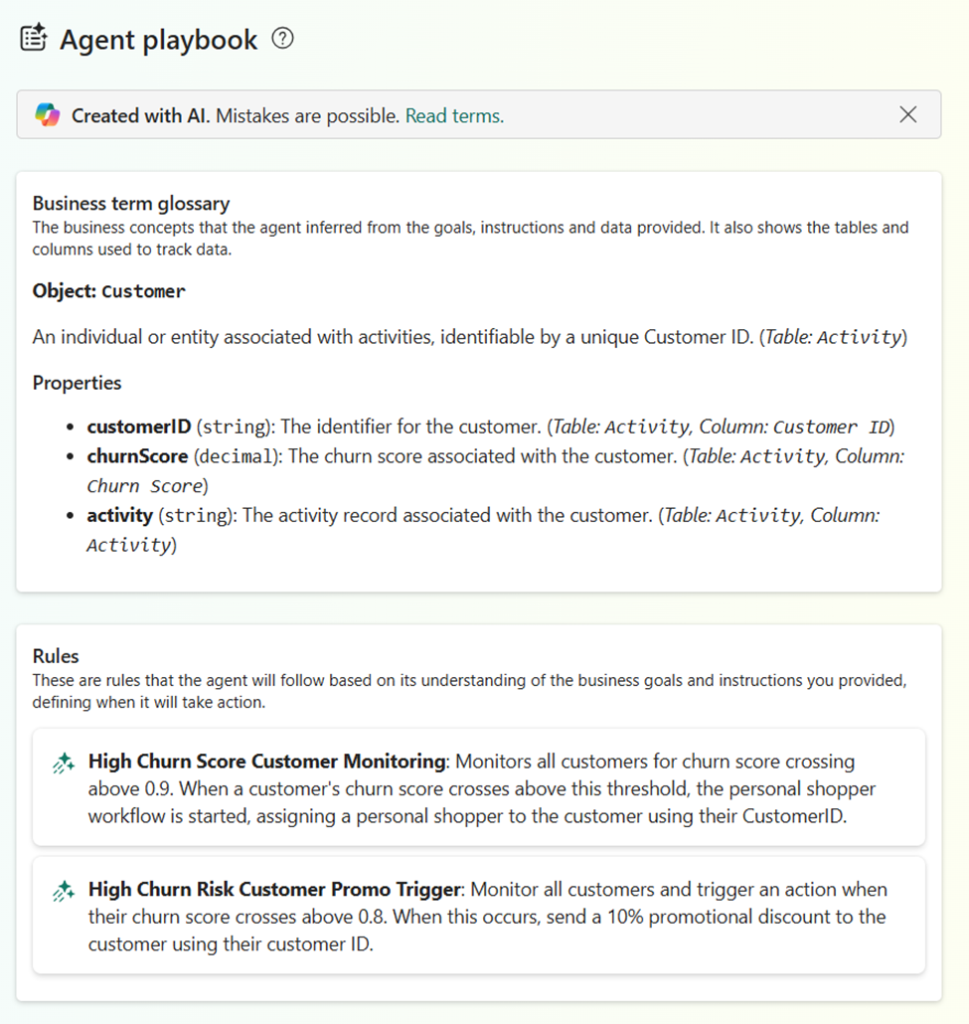Improving Operational Efficiency with Operations Agents in Fabric Real-Time Intelligence
Microsoft Fabric Blog explains how operations agents in Real-Time Intelligence use AI and ML to automate business monitoring, inference, and action, enabling teams to enhance operational efficiency.
Improving Operational Efficiency with Operations Agents in Fabric Real-Time Intelligence
Agentic systems are AI-powered agents capable of perceiving, reasoning, acting, and learning through continuous feedback loops. Microsoft Fabric Real-Time Intelligence provides a platform layer for these agents, allowing them to process signals from diverse sources and operate at scale.
Key Features and Ignite Updates
- Fabric Real-Time Intelligence connects data from time, space, physical, and digital sources, serving as the foundation for agentic solutions.
- The latest Ignite updates introduce autonomous operations agents that monitor data, infer goals, recommend actions, and learn from operational feedback.
- These agents utilize continuous monitoring and dynamic goal setting to construct actionable plans.
How Operations Agents Work
- Setup and Configuration
- Users define business goals and instructions, choose Eventhouse data sources, and specify available actions via Power Automate integrations.
- Goals provide context for business processes, while instructions clarify which fields to monitor and what actions to take.

- Autonomous Planning
- The agent creates a playbook, detailing entities, properties, and monitoring rules rooted in Eventhouse data.
- It continuously observes for events matching defined conditions.

- Reasoning and Action
- When relevant conditions are met, the agent evaluates and recommends appropriate actions, submitting its findings and recommendations to users in Teams.
- Users retain control, validating proposed actions before automation occurs.

Getting Started
- Enable Copilot/AI and operations agent settings at the tenant level.
- Use a workspace backed by Fabric capacity (trial capacities not supported).
- Find full documentation: Operations Agent
- Share your scenarios or feedback in the Fabric Community Forums.
Real-World Impact
Operations agents in Fabric Real-Time Intelligence are designed to:
- Automate monitoring and response workflows
- Help organizations reduce risk
- Keep humans informed and involved
- Boost decision-making by embedding real-time AI and ML in business processes
Author: Microsoft Fabric Blog
This post appeared first on “Microsoft Fabric Blog”. Read the entire article here


